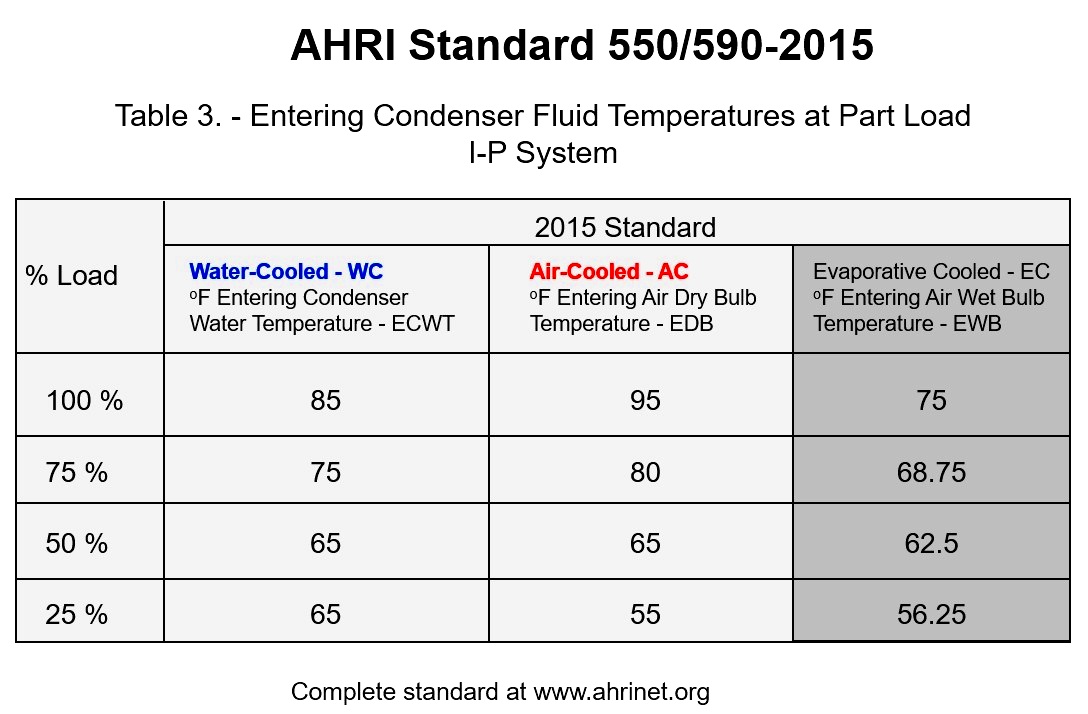How To Develop Cooling Tower Life Cycle Cost Analysis: Incorporating Part Load Values or IPLV
/By Chad Edmondson
Creating a reasonable load profile is essential for calculating and then comparing lifecycle costs of specific cooling towers, including various brands and/or models within a specific brand. To do that we have to estimate the number of hours a cooling tower will operate at various load conditions.
If you don’t know your load profile (and don’t anticipate taking the time to research it), we suggest using the IPLV (Integrated Part Load Value) for chillers per AHRI 550/590 – 2015. This standard anticipates that the chiller will typically operate at:
100% load for 1% of the year = 88 hours per year
75% load for 42% of the year = 3679 hours per year
50% load for 45% of the year = 3942 hours per year
25% for load 12% of the year = 1051 hours per year
If you do not have the specific load profile for the area in which the system you are designing will be installed, we strongly suggest you use these numbers. After all, if the chiller is operating, then the cooling tower is operating, right? And using the IPLV is less cumbersome than looking up BIN hours. This will allow you to estimate and fairly compare the lifecycle costs of equipment.
The IPLV also suggests specific condenser water temperatures at various chiller loads. These values incorporate resetting the condenser water temperature (water going from the cooling tower to the chiller) as the load drops:
85°F condenser water temperature at 100% load
75°F condenser water temperature at 75% load
65°F condenser water temperature at 50% load
65°F condenser water temperature at 25% load
The above numbers apply to water-cooled chillers, which is the type of chiller we are using in our example throughout this series. However, AHRI also has IPLV values for air-cooled chillers and for evaporative cooling equipment:
Based on all of the above, we now have a lot more information that we can now add into our life-cycle cost worksheet.
Next up we will look into deriving those outdoor wet bulb values with a quick and not too painful review of the psychrometric chart.




